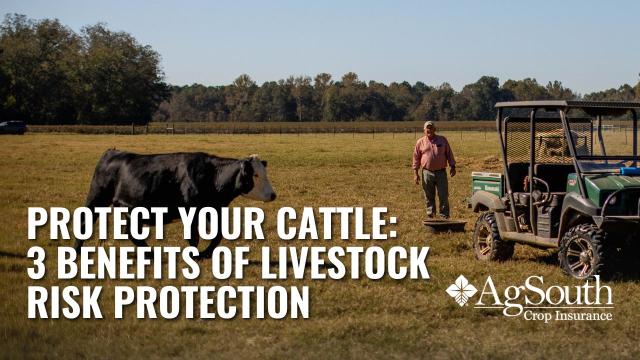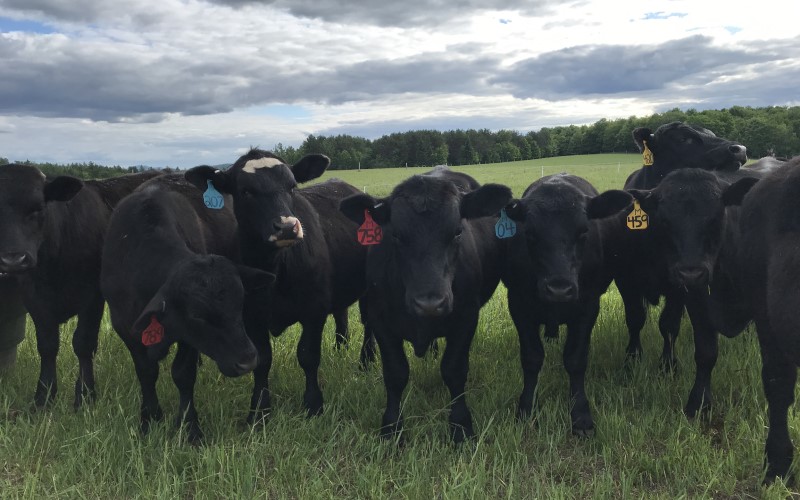Protecting Success: Bagley Risk Management Services
Key Variables to Think About When Finding Animals Risk Protection (LRP) Insurance Coverage
When evaluating options for Livestock Danger Security (LRP) insurance coverage, numerous vital variables necessitate mindful consideration to ensure effective risk management in the agricultural sector. Choosing the best coverage options tailored to your specific livestock procedure is extremely important, as is recognizing just how exceptional prices associate with the level of security provided. Additionally, the eligibility criteria for different kinds of animals and the adaptability of the plan to adapt to altering scenarios are critical components to consider. In addition, the performance and openness of the insurance claims process can dramatically affect the overall experience and financial results for animals producers. By strategically browsing these vital elements, manufacturers can secure their investments and minimize prospective risks properly.
Protection Options
When considering Livestock Threat Protection (LRP) insurance coverage, it is necessary to recognize the different insurance coverage options readily available to reduce threats in the agricultural market. Animals Risk Defense (LRP) insurance policy uses different protection choices tailored to satisfy the varied requirements of animals producers. Bagley Risk Management. Among the primary coverage alternatives is rate coverage, which protects versus a decrease in market costs. Manufacturers can pick the insurance coverage level that lines up with their rate risk administration objectives, allowing them to safeguard their operations against potential monetary losses.
Another vital insurance coverage alternative is the endorsement duration, which figures out the size of time the insurance coverage is in effect. Producers can choose the recommendation period that best matches their manufacturing cycle and market conditions. Additionally, insurance coverage degrees and rates differ based upon the sort of livestock being guaranteed, providing producers the adaptability to personalize their insurance coverage plans according to their details needs.
Comprehending the different insurance coverage options readily available under Animals Risk Defense (LRP) insurance coverage is essential for manufacturers to make enlightened decisions that properly safeguard their livestock procedures from market uncertainties.
Costs Expenses

Animals Threat Defense (LRP) insurance policy provides important protection choices tailored to reduce dangers in the agricultural industry, with a considerable element to think about being the computation and structure of premium costs. These include the type and number of animals being guaranteed, the insurance coverage level selected, the existing market prices, historic cost data, and the length of the coverage period.
Premium expenses for LRP insurance are generally determined based on actuarial data and risk analysis models. Insurers analyze historical information on animals costs and manufacturing expenses to establish a suitable premium that mirrors the level of threat involved. It is important for animals producers to very carefully evaluate premium costs and insurance coverage choices to guarantee they are effectively protected against prospective economic losses due to adverse market problems or unforeseen events. By comprehending how exceptional costs are computed and structured, producers can make informed choices when selecting the ideal LRP insurance plan for their procedure.
Qualified Animals
The decision of qualified animals for Livestock Danger Security (LRP) insurance protection includes careful consideration of details criteria and features. Livestock kinds that are usually eligible for LRP insurance coverage consist of feeder cattle, additional hints fed lambs, swine, and cattle. These pets must satisfy particular qualifications associated with weight varieties, age, and planned usage. Additionally, the eligibility of livestock may differ based upon the details insurance policy company and the terms of the policy.
Feeder cattle, for instance, are typically qualified for LRP protection if they drop within specified weight ranges. Fed livestock may likewise be qualified, yet they need to meet specific weight and top quality grade requirements. Swine eligible for protection generally include market weight animals meant for massacre. Lambs are an additional category of livestock that can be considered for LRP insurance coverage, with elements such as weight and age playing an important role in identifying their eligibility.
Before choosing LRP insurance policy for livestock, manufacturers must carefully examine the qualification criteria detailed by the insurance copyright to ensure their animals satisfy the essential requirements for protection.
Plan Flexibility
Policy flexibility in Animals Threat Security (LRP) webpage insurance policy enables manufacturers to customize protection to match their certain requirements and risk monitoring techniques. This adaptability equips livestock manufacturers to customize their insurance policy policies based on factors such as the kind of livestock they have, market conditions, and private risk resistance levels. By using customizable alternatives, LRP insurance makes it possible for producers to successfully manage their danger exposure while securing their animals operations versus unanticipated market volatility.
Claims Refine
Upon experiencing a loss or damage, producers can start the insurance claims procedure for their Livestock Danger Defense (LRP) insurance by immediately calling their insurance copyright. It is important for manufacturers to report the loss immediately to accelerate the cases process. When connecting to the insurance policy service provider, manufacturers will certainly require to offer in-depth information regarding the case, consisting of the day, nature of the loss, and any appropriate documentation such as veterinary records or market value.

After the evaluation is complete, the insurance policy company will choose relating to the claim and connect the outcome to the manufacturer. If the insurance claim is approved, the producer will certainly receive payment according to the terms of their Animals Risk Defense (LRP) insurance plan. Bagley Risk Management. It is important for manufacturers to be familiar with the cases process to make certain a smooth experience in the event of a loss

Final Thought
To conclude, when selecting Livestock Risk Defense (LRP) insurance policy, it is important to think about coverage alternatives, premium expenses, eligible animals, policy versatility, and the cases process. These vital aspects will help Related Site make sure that ranchers and farmers are sufficiently shielded against potential risks and losses related to their livestock operations. Making an educated choice based on these factors to consider can inevitably result in better financial safety and security and satisfaction for animals producers.
Livestock Risk Security (LRP) insurance policy provides various protection options customized to satisfy the diverse needs of animals manufacturers.The decision of eligible animals for Livestock Risk Defense (LRP) insurance coverage includes careful factor to consider of details requirements and characteristics.Plan versatility in Livestock Threat Security (LRP) insurance enables producers to customize protection to suit their certain needs and take the chance of administration techniques.Upon experiencing a loss or damages, producers can launch the claims procedure for their Livestock Danger Protection (LRP) insurance coverage by promptly calling their insurance service provider.In verdict, when selecting Animals Risk Security (LRP) insurance policy, it is necessary to consider insurance coverage choices, premium costs, qualified livestock, plan adaptability, and the insurance claims procedure.